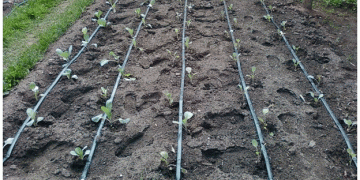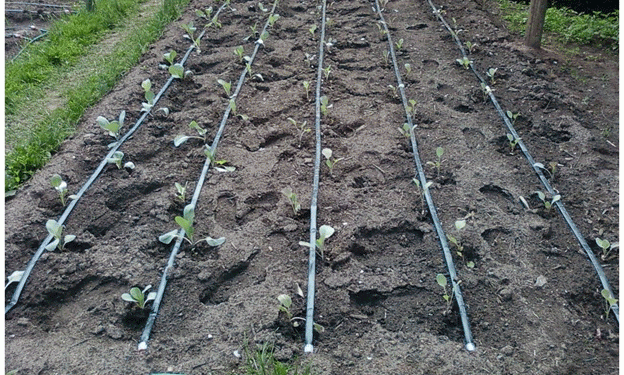In response to persistent drought conditions and rising water costs, Alberta farmers are increasingly adopting subsurface drip irrigation systems. This modern irrigation method offers an efficient alternative to traditional overhead sprinkler systems, which are less effective in water conservation.
Why Subsurface Drip Irrigation?
Subsurface drip irrigation involves placing drip tubes or hoses below the soil surface to deliver water directly to the plant roots. This method contrasts sharply with traditional overhead irrigation systems, which often lead to significant water loss due to evaporation and wind.
1. Efficiency and Water Conservation
Robert Wolbert, a rancher from southern Alberta, invested $3 million in a subsurface drip irrigation system with the expectation of halving his water usage. Wolbert’s decision aligns with a broader trend supported by recent research. According to the Irrigation Association, subsurface drip irrigation can reduce water usage by 30-70% compared to traditional sprinkler systems. This efficiency is crucial as the Alberta Environment and Parks reports that the province is experiencing more frequent and severe drought conditions.
2. Comparison with Traditional Sprinkler Systems
Traditional sprinkler systems, while widely used, are less efficient due to evaporation and wind drift. Studies have shown that up to 30% of water can be lost through evaporation and wind in overhead irrigation systems. In contrast, subsurface drip irrigation minimizes these losses by delivering water directly to the soil where it is needed most. Research from the University of Alberta highlights that subsurface drip systems can reduce water loss to evaporation by over 50%, which is a significant improvement in water management for agriculture.
3. Long-Term Cost Benefits
While the initial investment in subsurface drip irrigation systems can be high, the long-term savings are substantial. According to a study published in Agricultural Water Management, subsurface drip irrigation systems offer a higher return on investment over time due to reduced water usage and increased crop yields. Wolbert’s investment reflects this trend, with expectations of reduced water bills and improved crop efficiency.
4. Technological Advancements
Recent advancements in subsurface drip irrigation technology have made these systems more accessible and effective. Modern systems feature improved drip emitters, advanced control technologies, and more durable materials. The USDA Natural Resources Conservation Service notes that these advancements contribute to more precise water application, leading to better crop yields and resource conservation.
5. Future Outlook
The adoption of subsurface drip irrigation in Alberta represents a shift towards more sustainable agricultural practices. As Wolbert suggests, traditional sprinkler irrigation may become obsolete as more farmers recognize the benefits of water-efficient technologies. The Alberta Agriculture and Forestry department supports this transition, emphasizing the need for innovative solutions to address water scarcity challenges.
The increasing adoption of subsurface drip irrigation by Alberta farmers highlights a significant shift towards more efficient and sustainable agricultural practices. By reducing water wastage and offering long-term cost benefits, subsurface drip systems are poised to become a standard in modern agriculture. As drought conditions persist, technologies like these will play a crucial role in ensuring the future of farming in Alberta and beyond.
































